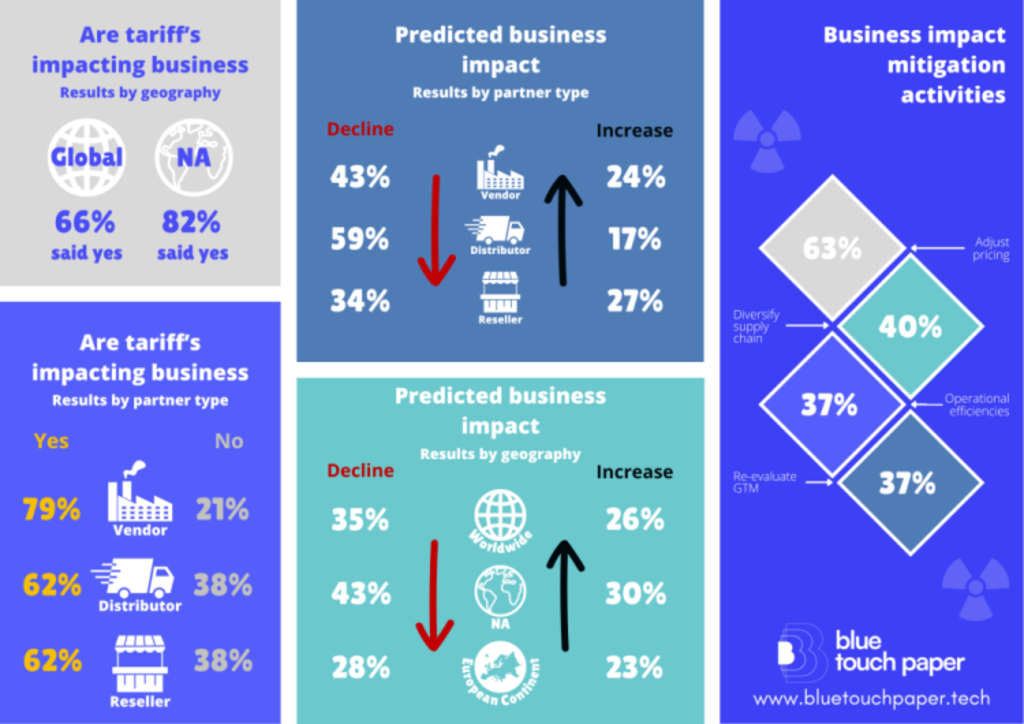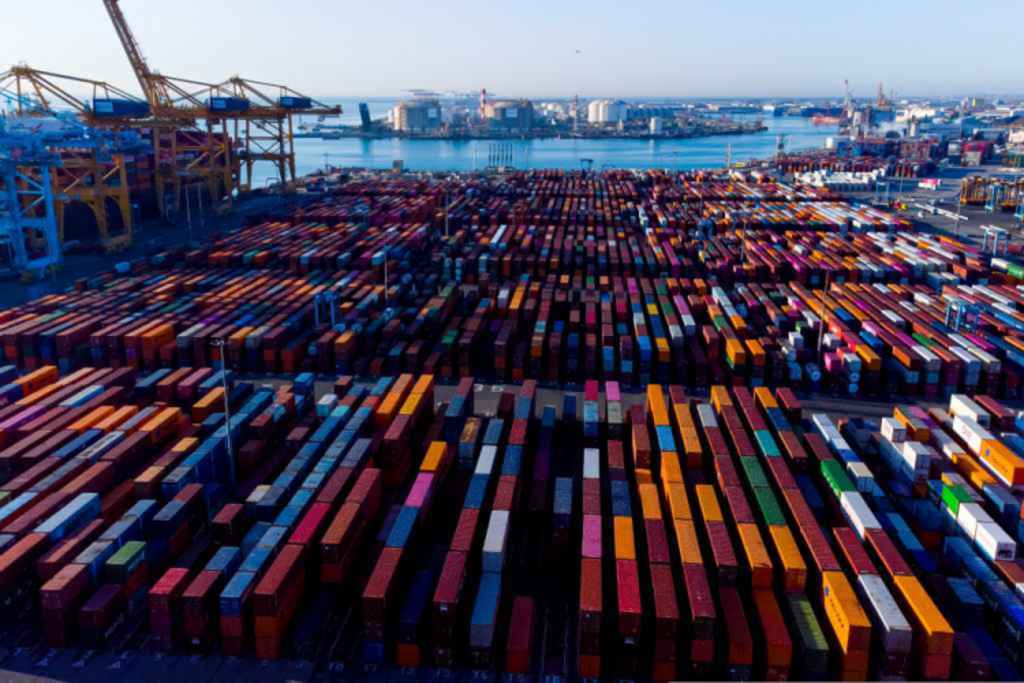With the reality of tariffs setting in for the global industry, Reece Webb explores how the world of AV is facing up to the challenge.
We live in interesting times. 2025 is halfway through, and the impact of a second Trump presidency is being keenly felt throughout the industry. In an attempt to assess trade deficits, President Trump introduced, with much fanfare and pageantry, an onslaught of tariffs on international trading partners across the world, an event which Trump refers to as “Liberation Day”. In the context of Europe, “Liberation Day” harks back to the power of cooperation between American, British and European allies in the Second World War.
Today, President Trump’s “Liberation Day” rhetoric is tinged with promises of higher costs, international disruption, and a substantial hit to the global economy. At the time of writing, the numbers and even the legality of Trump’s tariffs continue to fluctuate and be called into question, making an accurate assessment of the direct impact of tariffs difficult to measure.
What can be assessed though is the impact caused by the uncertainty and unpredictability surrounding tariffs which are causing some to consider new supply chains. While it is almost impossible to keep up with the ever-changing rates, U-turns and escalations, the impact of this unabated uncertainty on our interconnected industry cannot be ignored. The impact has been immediate. Consultancy Blue Touch Paper launched an ongoing tariff ‘pulse check’ survey to identify and assess how discussions and actions around tariffs are impacting business across the global UC and AV industries, targeting a cross-section of vendors,
distributors and resellers.
Blue Touch Paper found that 66% of respondents are reporting that tariff discussions are having an impact on their businesses, with 79% of vendors and 62% of distributors surveyed feeling the greatest pressure of
all. The impact is encouraging organisations to consider major shifts in manufacturing locations while also taking steps to shift towards alternative solutions and supply routes.

Weather the storm
The AV industry is no stranger to global disruption, weathering massive disruptions to global supply chains, a rise in inflation and much more, so how can the AV industry in EMEA make the most out of the “cards” that it has been dealt?
Erin Phillips, vice president, Theory Professional/Pro Audio Technology, commented: “The current US-worldwide tariff war has had a substantial impact on our businesses, both with Pro Audio Technology (made in the US), and Theory Audio Design (made in China, Thailand, and Europe).
“The first and most prominent impact is the uncertainty itself. It is nearly impossible to know what our products will cost tomorrow, next week, next month, next year, etc. with the tariff rates drastically changing for not just China but all countries around the world (and with no end or predictable rates in sight). If we don’t know our own costs, how are we supposed to be able to provide accurate pricing for our customers and their end users? It trickles all the way down stream.
“The second issue is that the tariffs hit all businesses whether they are a business that makes products in the US or not. We know this, because we are a company that does both and both companies are being affected. Unless you are a US manufacturer that only uses US made components and raw materials that come from the US you are in some way being affected by the tariffs.”
The impact felt by US manufacturers has also been felt keenly by integrators in the Middle East region, as Banan Masri, MaktabiTech, explains: "We’ve observed several key challenges resulting from evolving tariff policies and global supply chain disruptions, particularly across the EMEA region. Firstly, the extended lifecycle of projects in markets like Saudi Arabia creates significant pricing challenges. Due to long lead times from project tender to execution, any increase in material costs—driven by tariffs or other factors—cannot typically be passed on to clients after the initial proposal. This constraint directly impacts our margins and overall profitability.
"Secondly, sourcing materials from the U.S. has become increasingly difficult due to longer delivery timelines and greater uncertainty. These delays make project planning and execution more complex and less predictable."
For manufacturers operating globally, the free-flowing, fast-paced nature of tariff uncertainty is translating into wider insecurity and doubts for customers down the chain, however global manufacturers stress that these difficulties are limited in scope and primarily affect the US market.
Shaun Xiao, vice president, Absen, says: “The United States represents approximately 15% of Absen’s total global revenue. While recent tariff changes have created short-term challenges for our US customers, particularly given that most LED display manufacturing is based in China, the long-term impact on our overall business remains limited.
“Absen is closely monitoring policy developments and will continue to take proactive, targeted measures in response. Although additional tariffs have placed some pressure on profit margins, our strong customer
relationships, combined with our leadership in technology and product differentiation, help offset those effects. Moving forward, we’re focused on strengthening our competitive edge by optimising production
processes, expanding into new markets, and driving innovation across our product lines to mitigate the impact of these external factors.”
Watch and wait
For integrators outside of the US, a wait-and-see attitude prevails. Tariffs are largely affecting manufacturers and end-clients at each end of the supply chain, but risk assessment and mitigation is a key focus for integrators both global and regional.
Jean-Paul Lemmens, vice president of procurement, product and strategic partner management for global operations, Kinly, explains: “Kinly is based in all regions, but our main region is Europe with strong business in APAC and the US. [As a result of tariffs], one of the first thing we did was set up a special team across the regions to gather all the knowledge on tariffs, their implications on different regions and shared spaces to examine the effects of the prices from a procurement perspective and from a customer perspective.
“Now we are three months in, it’s clear that the biggest impact is in the US, but there has not been much of an effect on pricing, it’s more so the uncertainty that’s hitting the market. We are giving most of the tariff lists straight to our customers as we cannot take the risk on tariffs. If a customer decides to do a project worth five million Euros and orders it now but he/she doesn’t know what the price will be in two months’ time
when it lands in country, this can be exceptionally difficult, and the client will not sign off on that. We either jointly take the risk or mitigate the risk by putting in other products or brands from other countries of origin, or we speed up the process to make sure that LED screens are purchased now and shipped.
“We had to introduce a new policy for our quotes after the tariffs were announced as we needed to mitigate the risk. Since the situation can change so dramatically in a matter of weeks, clients have to make a decision more quickly than before, or we will need to make an updated quote.”
Manufacturers, especially those based in the US and China, are also reacting and focusing on both clear communication and diversification to remain competitive. Phillips continues: “We were very quick to pivot our manufacturing strategy to diversify where our products are (and can be) made, while simultaneously working very closely with our suppliers to get our products and necessary components into the US when
the tariff rates have been easier to swallow.
“We are managing inventory very closely and are being very transparent with our customers on the costs we have incurred at various stages. We are choosing to eat some costs, while passing along others without mark-up and that is only on products and inventory that have been affected thus far. We are asking our customers to do the same for their customers, the end users, to soften the financial blow. We are also in the process of establishing an EU warehouse to be able to fulfil customer orders for foreign markets without the tariffs impacting the goods they buy.”

Photo credit: davide bonaldo/Shutterstock.com
Trust but verify
While we remain in the depths of insecurity and uncertainty driven by the chopping and changing of tariffs, it is important to remember that this is not a situation that will last forever. Manufacturers, distributors and
integrators will need to closely monitor the situation and remain proactive to avoid any unforeseen changes to tariffs down the line and to remain resilient to future disruption once the uncertainty settles.
“Covid really taught us how to act on this and quickly set up teams to mitigate risk,” says Lemmens. “Open and honest communication is key, and integrators should keep a keen focus on expectation management
with end customers. Overall, we are on top of it. The biggest risk is for manufacturers and end customers, manufacturers need to make decisions on starting new production lines across the world, which will cost a lot of money and it’s not easy to do, but you never know what the next tariff idea will be. Some companies are moving to Mexico, outside of the US, where products from China are imported and shipped to the US, but this may not last forever. Uncertainty is the biggest issue, and I hope that the US administration will provide further clarity to get rid of this uncertainty.”
For others, exploring partnerships with manufacturers that produce outside of China and the US has become a viable option, as Masri explains: "As a strategic response, we have explored partnerships with European suppliers. Working with them has proven to offer greater stability in both pricing and lead times, enabling us to better manage risks and deliver consistent value to our clients. Navigating this landscape requires a proactive approach, with a strong focus on supply chain flexibility, strategic sourcing, and early planning to adapt to shifting economic conditions."
Phillips closes: “Our strategy will continue to be to diversify what and where our products are being made, while being smart and forward-looking at the growth opportunities in foreign markets. Establishing an EU warehouse is the first step, and as we continue to grow, we anticipate establishing warehouses in other major foreign markets as well. We are also very closely forecasting demand and matching that demand with our
production capacity so that we can ensure we have the parts and products we need available to our customers when they need them at prices, they (and their customers, the end users,) can afford. If nothing else, the tariff uncertainty and its effects on the world economy, have shown us that it is important to not have all your eggs in one basket. It has also forced us to think bigger and smarter and above all else, to diversify our business to continue to grow and succeed.”
Main photo credit: Andrii Yalanskyi/Shutterstock.com